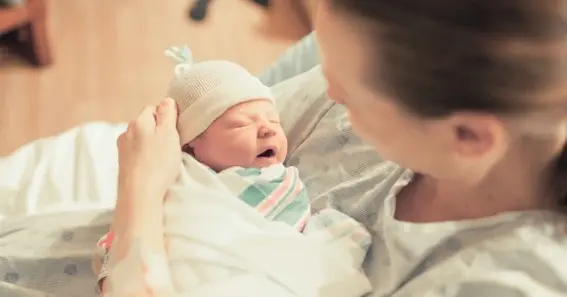Birth is undoubtedly one of the biggest miracles of nature. After nine long months of transformation from a fertilized egg to a fully-formed human, you finally welcome your baby into the world.
The advancement in medical science has made it possible for mothers to have a healthy pregnancy despite all the odds and avoid complications during childbirth. However, childbirth can be a difficult procedure at times. Even if a mother has a healthy pregnancy and the birth process goes well, injuries can occur. Additionally, medical malpractice or deliberate negligence can result in injuries for both the mother and the baby.
Childbirth injuries can have a long-term adverse effect on your baby, impeding their normal growth and development, as well as their overall health. While some symptoms might show up immediately after your child is born, others may appear later in life. Whether you experienced an unexpected labor complication or suspect medical negligence during or after labor, you must look for signs and symptoms of birth injuries in your child.
In this article, we’ll shed light on various reasons behind childbirth injuries, their signs and symptoms, and their long-term effect on the baby.
What Causes Childbirth Injuries?
Birth injuries occur due to certain underlying medical conditions as well as medical malpractice. Here are some of the most common causes of childbirth injuries:
- Medical Malpractice
A deliberate negligence on the part of the healthcare provider during labor may result in serious injuries to the baby and mother. While there may be no immediate symptoms, these birth injuries can cause lifelong neurological disorders and physical disabilities.
If a child suffers from birth injuries, parents have the option to file birth injury lawsuits against the hospital or healthcare provider. This legal avenue will not only seek justice and accountability but also secure financial support for your child’s lifelong disabilities and disorders.
Although financial compensation cannot bring back your child’s perfect health, it can go a long way in helping you get the best treatment and medical interventions for your child’s rehabilitation and improved quality of life.
- Premature Birth
Premature babies that are typically born before 37 weeks of gestation are more prone to have birth injuries. This is because the body functions and organs of premature babies may not have fully developed, which makes them more vulnerable to physical trauma during labor and delivery. Such babies may experience bruises, broken bones, or even nerve damage during the delivery process.
The following factors put a premature birth at higher risk of experiencing birth injuries:
- Premature rupture of membranes (PROM) or water break
- Low birth weight
- Placenta previa or low-lying pregnancy
- Forceps or Vacuum Extraction
If the cervix (lower portion of your uterus) doesn’t open adequately or the baby’s head is too large to pass through the birth canal, the healthcare provider may have to use forceps or vacuum extraction to guide your baby’s head out of the birth canal. However, forceps and vacuums can also cause injuries to the baby.
- Prolonged Labor or Delayed Birth
When labor lasts for more than 18 hours, it can increase pressure on the baby’s brain, resulting in fetal distress. Your unborn baby may have increased blood pressure during the labor process, which may cause lifelong cardiovascular disease or even a stroke.
- Oxygen Deficiency
If your baby has a prolapsed umbilical cord during labor or underdeveloped lungs by the time they’re born, it may cause serious oxygen deprivation. Oxygen deprivation can be life-threatening for the baby and may cause serious damage to the brain, heart, and other vital organs. A survey reveals that most cases of birth-related brain damage and multi-organ injury stem from a lack of oxygen during labor and delivery, a condition known as asphyxia.
Also Read N: How To Create Eye-Catching Facebook Banners Using Adobe Express Free Tool
Signs and Symptoms of Birth Injuries
Now that you’re well aware of the causes of birth injuries, stay vigilant for the following signs and symptoms in case you’ve experienced any of the above situations during labor:
- Symptoms that Appear Immediately After Birth
Some signs of birth injuries may appear as soon as the child is born. Some visible injuries and bruises may be temporary and not risk your child’s health; others may indicate some form of serious damage. Here are some visible signs and symptoms you may notice immediately after birth:
- Bluish skin indicating lack of oxygen
- Low pulse and oxygen concentration
- Continuous crying with hands curled
- Poor suckling
- Difficulty swallowing
- Muscle stiffness or tensed body
- Fits or seizures
- Apparent fractures or swollen areas, especially around the skull and neck
- Weak or no reflexes
- Symptoms that Show Up to 24 Months
Although some symptoms look temporary at birth and disappear without apparent after-effects, check for the following symptoms of a possible birth injury in a toddler aged 12 to 24 months:
- Delayed or missed milestones like sitting, crawling, walking, and maintaining balance on feet.
- Delayed speech
- Consistent muscle stiffness
- Lack of control over limb movements
- Difficulties in eating and drinking
- Inability to hold things or a weak grasp
- Pulled neck
- Absence of body movements
- Poor or no hand-body coordination
- Auditory, visual, and sensory problems
- Initial diagnosis of lifelong disorders like cerebral palsy, Erb’s palsy, brachial plexus, kernicterus, etc.
- Symptoms that Appear in Preschool Age (2+ Years)
While most of the symptoms related to birth injuries show up to 2 years of age, some parents or even healthcare providers misdiagnose them as average developmental delays. Here are some signs and symptoms of childbirth injuries that may appear in children after 2 years of age:
- Permanent loss of verbal, auditory, and visual abilities
- Muscle stiffness that doesn’t go away
- Weak or no gross and fine motor skills
- Frequent fits, tremors, and seizures
- Diagnosis of developmental disabilities, such as epilepsy, cerebral palsy, autism, and attention deficit hyperactivity syndrome (ADHD)
- The child is unable to carry out daily activities independently
- Lack of comprehension
- Lack of control over limb movements/ frequent spasms
Also Read P: Making A Business Energy Comparison: A Step-By-Step Guide
Effects of Childbirth Injuries on Children
Internal bleeding in the brain and other parts of the body, spinal cord injury, and fractures in the skull and bones are some common examples of childbirth injuries. These injuries can result in a variety of disorders and disabilities and may require lifelong medications, treatments, and therapies to improve quality of life. Here are some common disorders in children who experience childbirth injuries:
- Neurological impairments, such as cerebral palsy, Erb’s palsy, and kernicterus
- Physical disabilities resulting from brachial plexus injuries, which affect the nerves that control movement in arms and hands
- Intellectual and cognitive dysfunction or disabilities
- Behavioral changes
Final Thoughts
Birth injuries can have a devastating effect on the lives of both children and their families. It’s important to be aware of the above red flags of birth injuries so that they can be diagnosed and treated early. If you suspect that your baby has suffered a birth injury, don’t hesitate to seek immediate medical intervention and take legal action promptly.






